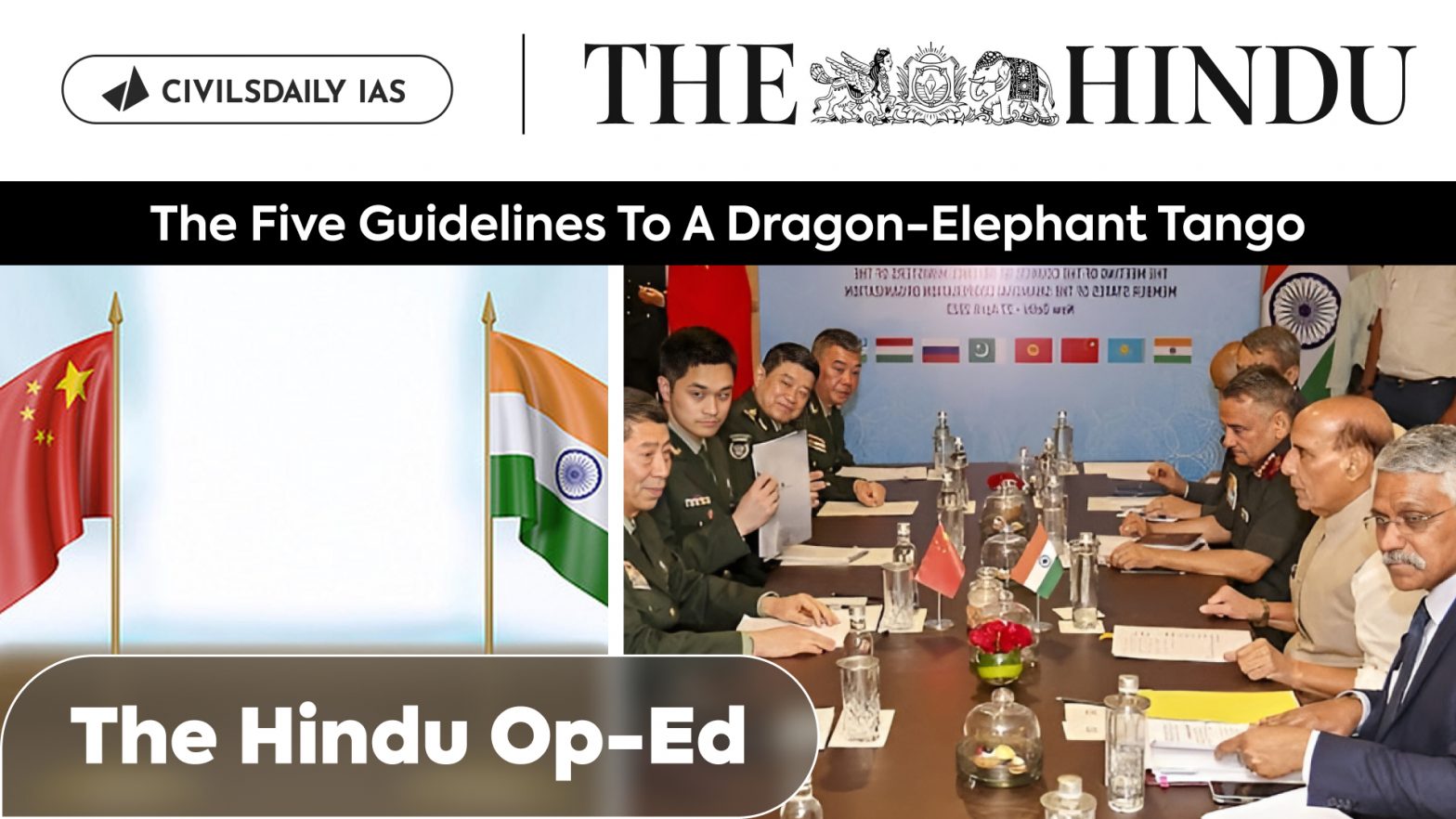| PYQ Relevance: Mains: Q1 The China-Pakistan Economic Corridor (CPEC) is viewed as a cardinal subset of China’s larger ‘One Belt One Road’ initiative. Give a brief description of CPEC and enumerate the reasons why India has distanced itself from the same. (UPSC IAS/2018) Q2 China is using its economic relations and positive trade surplus as tools to develop potential military power status in Asia’, In the light of this statement, discuss its impact on India as her neighbour. (UPSC IAS/2017) Prelims: Q ‘Belt and Road Initiative’ is sometimes mentioned in the news in the context of the affairs of: (a) African Union (b) Brazil (c) European Union (d) China |
Note4Students:
Prelims: Internation groups in which India and China are both members;
Mains: Issues between India and China;
Mentor comments: India-China relations are characterized by a complex interplay of cooperation and conflict. Historically rooted in ancient civilizations, the two nations have faced significant challenges, particularly territorial disputes along their shared border. The 2020 clashes heightened tensions, leading to military standoffs and economic measures. Despite these issues, both countries recognize the importance of dialogue and mutual respect, as emphasized in recent diplomatic engagements. The “Five Mutuals” framework aims to foster cooperation, highlighting shared interests and the potential for collaboration in regional and global contexts.
Let’s learn!
__
Why in the News?
The appointment of a new Chinese ambassador to India in May 2024 signals a potential intent to normalize relations.
Five guidelines of ‘Mutuals’
- Mutual Respect: This principle emphasizes the importance of recognizing and valuing each other’s unique cultural identities, social systems, and developmental paths.
- Mutual Understanding: This guideline focuses on the need for empathy and support, particularly in acknowledging each other’s historical struggles for independence and development. It advocates for increased dialogue and communication at all levels to build political trust and a solid foundation for bilateral relations.
- Mutual Trust: This principle highlights the necessity of overcoming suspicion and fostering a strategic perspective on bilateral relations. It encourages both countries to view each other as partners rather than competitors, promoting peaceful coexistence and the resolution of disputes through dialogue.
- Mutual Accommodation: This guideline acknowledges that differences and frictions are natural between neighbouring countries. It stresses the importance of effectively managing these differences through dialogue and finding mutually acceptable solutions, ensuring that cooperation is not hindered by isolated incidents.
- Mutual Accomplishment: This principle emphasizes the shared goals of national development and revitalization. It encourages China and India to support each other’s growth and collaborate on global issues, reinforcing the idea that their successes are interconnected and beneficial for both nations.
Issues between India and China:
- Border Disputes: The most significant source of tension is the unresolved border disputes, particularly in regions like Aksai Chin and Arunachal Pradesh. The deadly clashes in Galwan Valley in 2020 marked a severe escalation, leading to a prolonged military standoff and ongoing military tensions along the Line of Actual Control (LAC).
- Unequal Trade Relations: India faces a substantial trade deficit with China, leading to concerns about economic dependence. This imbalance has fueled economic nationalism and calls for reducing reliance on Chinese imports, further straining relations.
- Strategic Alliances and Regional Influence: China’s strategic ties with Pakistan and its increasing influence in South Asia and the Indian Ocean have raised alarms in India.
- India’s growing partnerships with the United States and other Quad members (Japan and Australia) are viewed by China as a challenge to its regional dominance, exacerbating the security dilemma between the two nations.
- Political Pressure: China has used its influence to block India’s attempts to gain membership in international forums, such as the Nuclear Suppliers Group, and to prevent India from placing individuals wanted for terrorism on UN watchlists.
Need an ‘all-round relationship’ (Way forward)
- Recognition of Differences: The relationship between China and India acknowledges the inevitability of differences and frictions due to their geographical proximity.
- Understanding and correctly perceiving these differences is essential for developing a constructive relationship.
- Dialogue and Mutual Accommodation: By emphasizing the importance of dialogue, both nations can effectively address core interests and concerns, allowing them to reach mutually acceptable solutions. This approach is rooted in the political wisdom of their ancient civilizations.
- Comprehensive Cooperation: The relationship is all-encompassing, meaning it should not be defined solely by specific differences.
- Cooperation should be resilient enough to withstand isolated incidents, ensuring that broader collaboration continues.
- Shared Development Goals: Both countries are at critical stages of national development and revitalization, with common interests that provide ample opportunities for cooperation.
- This shared vision fosters mutual accomplishments, promoting unity and collaboration in the Global South.

